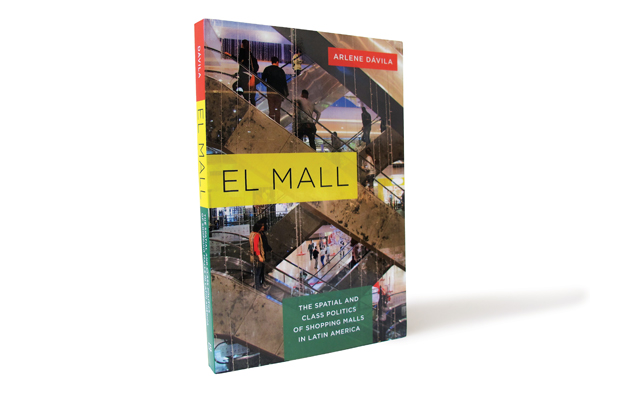The structures that inhabit our daily lives — our homes, businesses, churches — are often markers of the invisible forces that shape and crystallize them. But it takes a lucid and thoughtful eye to see the tangible as something also drenched in the revealing, subtle nuances of social and cultural life.
Arlene Dávila, the author of El Mall: The Spatial and Class Politics of Shopping Malls in Latin America, has just such an eye, and she uses it to guide readers through hypermodern Latin American societies with the shopping mall set as both lens and vessel. Or better yet, as metaphor.
The shopping mall, that grandiose wonder of a consumer culture unleashed by 20th century department stores, has lost ground within the United States. (Why not just buy online?) But “el mall” has, at the same time, grown substantially more important in many Latin American societies. Enjoying a bustling new chapter of its existence, the shopping mall is blooming across the region. This vertiginous growth is accompanied by a (conjectural) growth of local middle classes. Is the mall then a sign of the region’s “coming of age?” Dávila sets herself to answer the question.
In Colombia’s capital, Bogotá, which serves as Dávila’s case study, the author notes that “the status and social position of new middle classes with access to shopping malls remain circumscribed in a larger context of social differentiation that continues to reproduce the cultural hegemony of a living and imagined traditional bogotano elite.”
Dávila uses the growth of shopping malls in Bogotá to consider themes of class segregation and division, as well as the presence of neoliberal policies linked to the political and cultural closeness that has been woven for decades between Colombia and the United States.
Anyone who has been living in Colombia for the past few years is very well acquainted with its burst of new retail options. Luxury brands, impressive new shopping infrastructures, fast fashion emblems and an overload of “the foreign” have become the norm. This unprecedented advance is, as Dávila keenly notes, closely linked to themes of regional boosterism and the ways in which new experiences of consumption have transformed matters of taste, aesthetic expression and sartorial identity worldwide.
But these concepts cannot be separated from the deeper themes that Dávila unpacks as she examines the shopping mall as a metaphor for the ways in which social inequities are reconfigured and refashioned within a physical space. The mall, for the author, reveals a multitude of dynamics centered on consumption and class in Latin America. In Bogotá, for example, the experience of interacting in a shopping mall is a novel one for many of its visitors. It has become a place where people can re-create themselves beyond class distinction and their regular patterns of consumption. Malls are beaming emblems of the region’s pursuit of modernity, yes. But in a place such as Colombia, a place shaken by a history of violence, the mall also becomes a bastion of security.
Dávila is exhaustive in her examination of the shopping mall and what it means to Latin America, exploring everything from its role in real estate investment and speculation, to its existence as a political expression of U.S.-centered and global conventions.
This is a substantial read for anyone who is seeking to better understand how economic development in Latin America — and Colombia in particular — can be a starting point from which to contest and reflect the fragile ground on which ideas of modernity and progress, as embodied in spaces such as the mall, reside. El Mall is a fascinating demonstration of how the most material aspects of culture are often prisms of the unseen forces of social and cultural transformation.
—
Rosales is a fashion and style writer and editorial consultant from Cartagena, Colombia.





